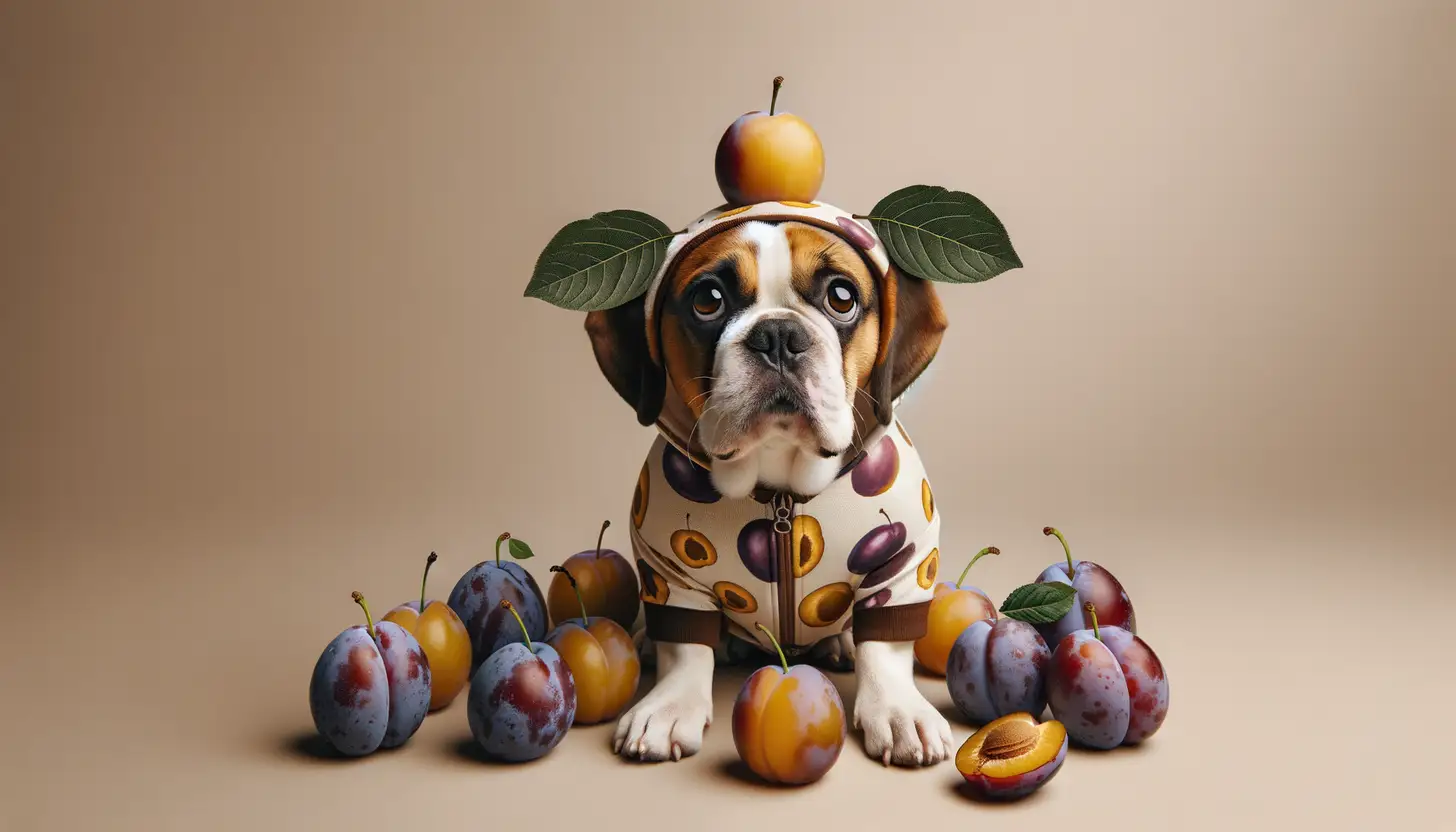
Can Dogs Eat Plums?
No, dogs should not eat plums. While the flesh of the plum itself is not toxic, the pits, leaves, and stems of plums are hazardous. They contain cyanogenic glycosides, which can release cyanide when ingested, leading to serious poisoning in dogs. Additionally, the pit can be a choking hazard or cause intestinal blockages.

By Stefan Stumpfl, in collaboration with Dr. Ali Raza.
Updated on Jul 22, 2024
The pit of a plum contains cyanogenic compounds, which can lead to cyanide poisoning in dogs.
Plums
Nutrition
Taste
Digestibility
Feeding Frequency
Allergic Risk
Why Are Plums Bad for Dogs?
Plums are dangerous because their pits contain cyanogenic glycosides. When ingested, these compounds can release cyanide, a highly toxic chemical that interferes with oxygen transport in the body. Even small amounts can cause severe poisoning. Furthermore, the hard pit poses a physical risk, potentially causing choking or creating an intestinal blockage.
How Much Plum Can Dogs Eat?
It's best to avoid giving your dog any part of a plum. Although small amounts of the flesh are not inherently poisonous, the risks associated with the pit, stems, and leaves far outweigh any potential benefits. Accidental consumption could lead to serious health problems or a trip to the emergency vet.
Common Misconceptions
Some pet owners think that removing the pit makes plums safe for their dogs. While the flesh isn't toxic, it's often left with trace amounts of cyanide due to contamination from the pit. Plus, dogs might accidentally swallow parts of the stem or leaf, making the whole fruit risky.
Similar Toxic Products
Plums aren't the only fruit to watch out for. Be on guard with:
- Cherries: Contain similar cyanogenic glycosides in their pits, stems, and leaves.
- Peaches: Their pits are also a source of cyanide and pose a physical hazard.
- Apricots: Another fruit with toxic pits and other parts, similar to plums.
What to Do If Your Dog Eats a Plum?
If your dog eats a plum, especially the pit, contact your vet immediately. Do not induce vomiting unless directed by a professional. Quick professional intervention is crucial to manage potential cyanide poisoning or to remove any obstruction caused by the pit.
Signs and Symptoms of Plum Poisoning in Dogs
Watch out for these symptoms:
- Vomiting or diarrhea
- Difficulty breathing
- Abdominal pain
- Weakness or lethargy
- Seizures
How Long After Eating Plum Will a Dog Get Sick?
Symptoms of cyanide poisoning can appear within minutes to a few hours. Keep a close eye on your dog if you suspect they have ingested any part of a plum.
When to Contact Your Vet for Advice?
Contact your vet at the first sign of any symptoms or even if you're merely concerned your dog has ingested a dangerous part of the plum. Better safe than sorry.
How to Treat Plum Poisoning in Dogs?
Your vet may induce vomiting or use activated charcoal to prevent further absorption of toxins. They might also administer intravenous fluids and supportive care to stabilize your dog. They’ll monitor your dog's vital signs closely, especially respiratory and cardiac functions.
Emergency treatments can be costly. Having pet insurance can alleviate financial stress, allowing you to focus on your pet's recovery rather than worrying about the bill.
What are Healthy Alternatives?
Instead of plums, consider these safe and nutritious options:
- Blueberries: Packed with antioxidants and vitamins.
- Apple slices: Just be sure to remove the seeds and core!
- Carrots: Great for chewing and low in calories.
Conclusion
Plums should be off the menu for your dog due to the risks posed by their pits, stems, and leaves. Always keep potentially harmful foods out of reach and consult your vet for dietary advice tailored to your dog's specific needs. Your pup’s safety comes first!